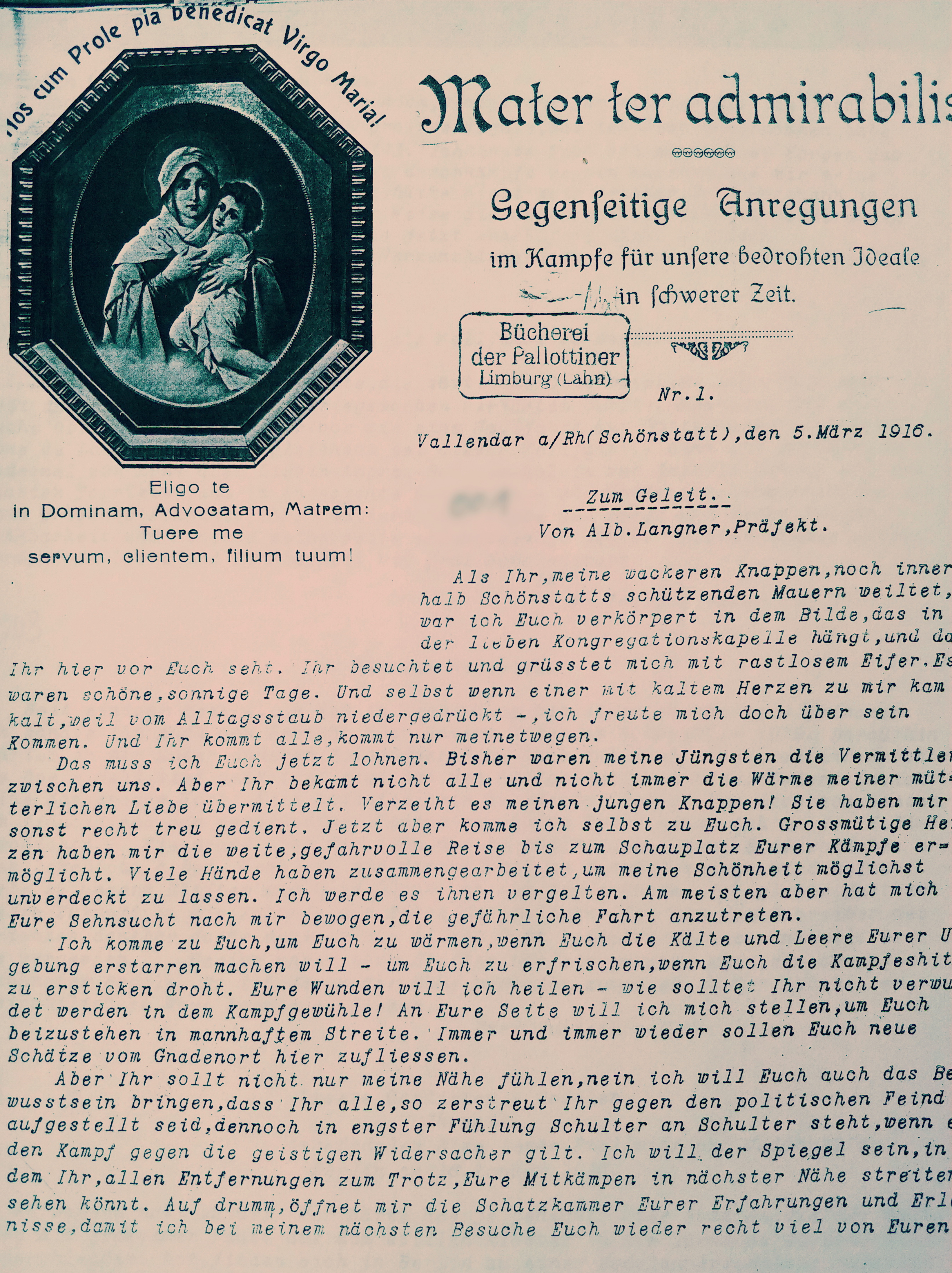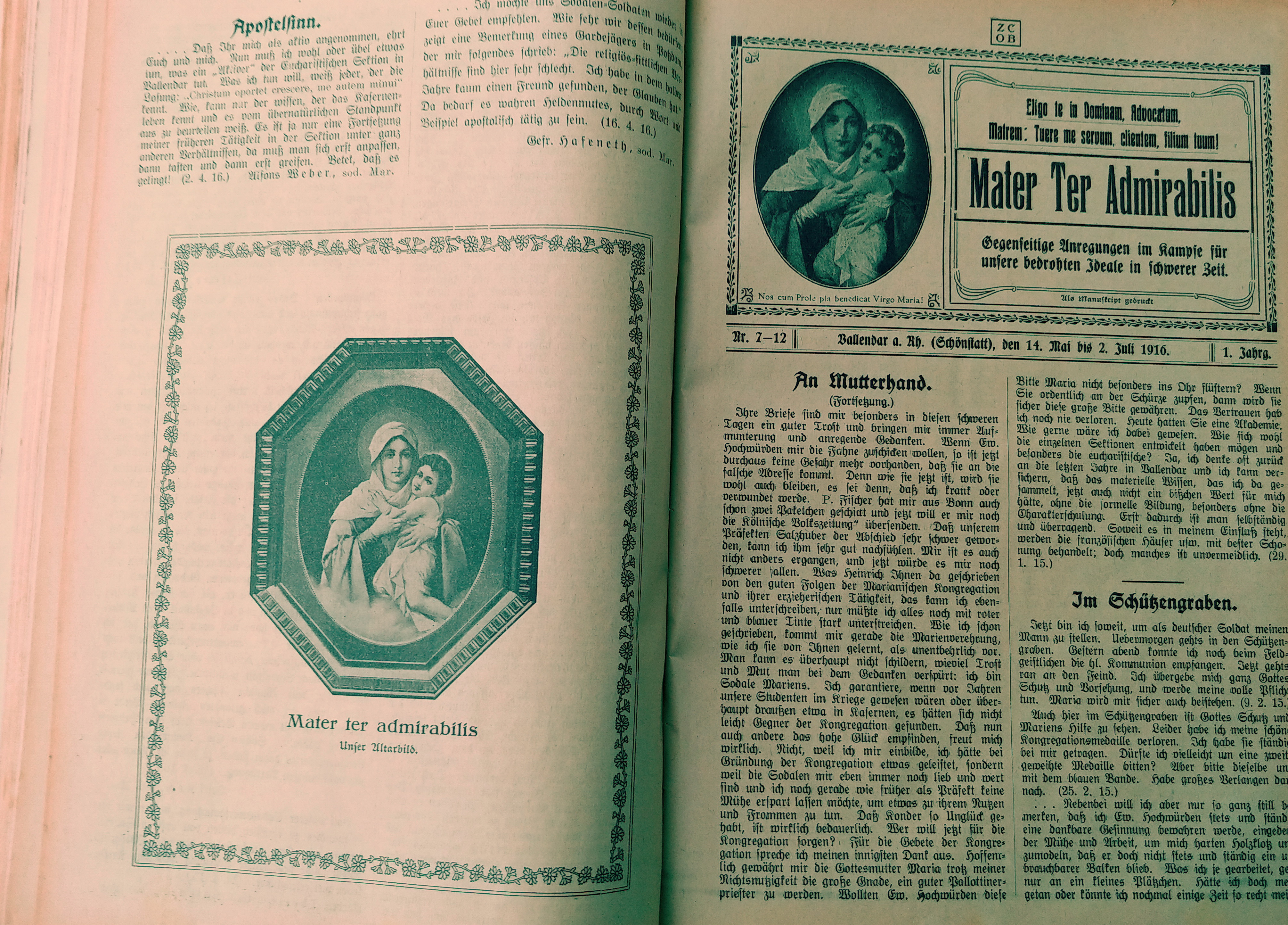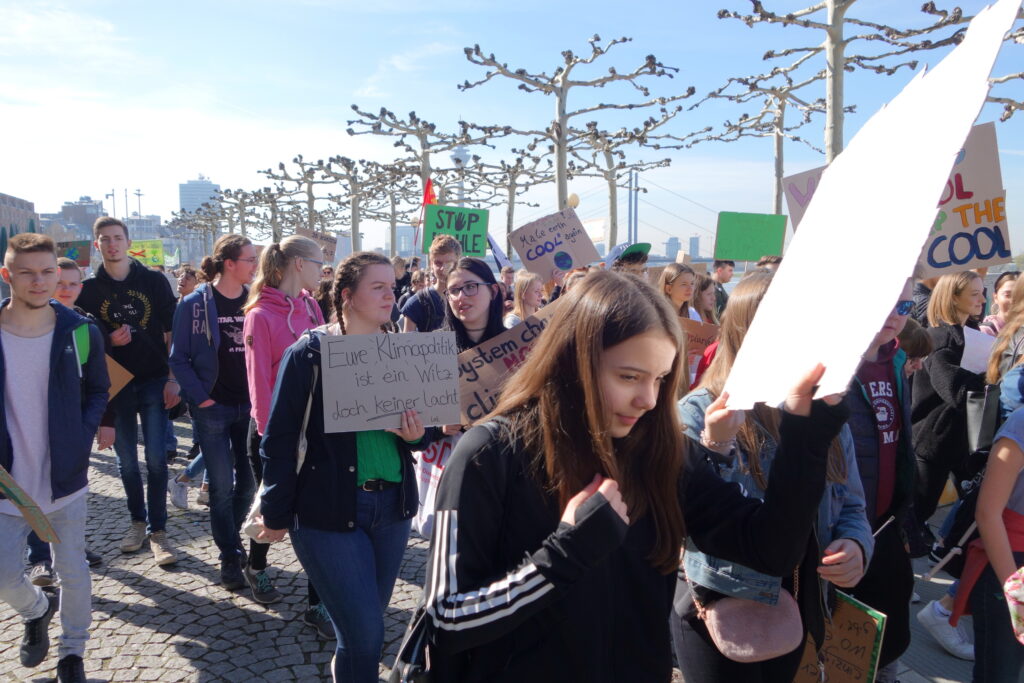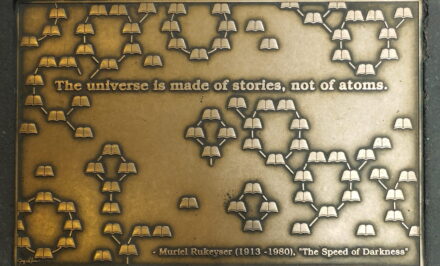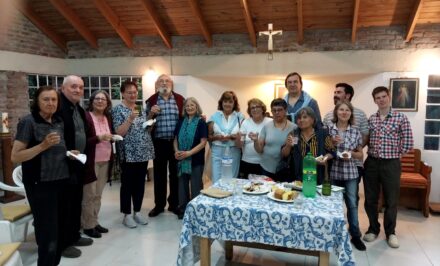COMMUNICATION ACCORDING TO JOSEPH KENTENICH’S EXAMPLE, Maria Fischer .
“So that you can tell your son and grandson” (Ex 10:2). Life creates history. That is the theme Pope Francis has chosen for the World Communication Day. “By choosing this theme, taken from a passage in the Book of Exodus, Pope Francis underlines how particularly precious is the patrimony of memory in communications. The Pope has emphasized many times that there is no future without being rooted in the lived history. He has helped us understand that memory is not to be considered as a “static body”, but more like a “dynamic reality”. It is by means of memory that the stories, hopes, dreams and experiences of one generation are passed on to another. … The next World Communications Day’s theme reminds us that every story is born out of life, from interacting with others. Communications is, therefore, called to connect memory with life through stories. Jesus resorted to parables to communicate the vital power of the Kingdom of God, leaving his audience free to welcome these narratives and to apply them to themselves. The ability to generate change expresses how powerful a story is. An exemplary story possesses a transformative power.” So far the Vatican’s Bulletin. Someone did this already a hundred years ago and created a model of narrative communication long before the word story telling came into vogue. This is the subject of this article, which was originally published in the German periodical “basis”. —
Professor Dr Westerbarkey, Dean of Communication Studies at the University of Muenster, asked three questions after he had read the outline of a research paper by a student. It concerned a pile of yellowing magazines dating from the beginning of the 20th century. The second question hit the nail on the head: What did the Church do with this Joseph Kentenich who radically questioned the downward communication of the Catholic Church with this model? Ignored? Silenced? Sent into exile? He said that that pile of yellowing magazines contained dynamite. Yet what Fr Joseph Kentenich did with that MTA magazine from1916-1922 was so simple. He related real, honest and exciting stories. From real life.
Real life stories
Since Studs Terkels’ book: “The Good War. An Oral History of World War II”, exemplifying a new type of journalism, no one can bypass story telling any more. What Kentenich’s contemporaries called “too psychological”, and intellectuals denounced as inappropriate, no longer sounds so revolutionary. Pulp magazines – such was the damning judgement not only at that time.
Yet the story telling in the MTA magazine latched onto the narrative tradition of the peoples and all the great religions in their educational processes. However, this narrative tradition has to a large extent been abandoned by the Christian churches and communities.
The Jesuit Dr Eckehardt Bieger wrote: “Since the fundamental presuppositions of this (Biblical) narrative were undermined by the criticism of religion, and questioned by the scientific and technical outlook on the world, the basis for the religious narrative tradition was destroyed. In answer to the threat to the tradition of passing on the faith, the churches themselves reached out to the means of the Enlightenment. They no longer trusted their own narrative tradition, but instead used the methods of instruction. (…) A narrative community became a teaching business.”
Fr Kentenich was convinced, and experience had taught him, that instruction would not help people cope with everyday life in the trenches.
“The stories of the religions talked about people who had experienced amazing things: they had experienced times of crisis, they took a new direction, and for them other values took precedence. – All these stories were related with reference to a transcendent partner of human beings, who acted in the stories of their lives, and who was of utmost importance to the heroes of religious stories”, Bieger wrote.
Precisely that is the reading matter of the MTA. The young men told each other about their experiences with God and this new approach connected with their “Sodality Chapel” and the renewal of the world from Schoenstatt.
In 1915 the first Schoenstatters were called up for military service. Until then they had all been together in one place, they had met together and experienced an intensive exchange of views with one another and Fr Kentenich.
And then? Fr Kentenich wrote countless letters, and encouraged the students left behind in Schoenstatt to feel responsible for maintaining contact with those “outside”. What was still lacking was a replacement for their gatherings. Not sermons, not talks; what these young people, who were now on their own, needed to support their convictions and ideals was the possibility to relate their experiences. So Fr Kentenich decided at the beginning of 1916 to produce a magazine, the Mater Ter Admirabilis, MTA.
The first edition consisted of a hundred copies, 8 pages typewritten and lithographed. It was produced through “Mary’s powerful assistance” and reported on a Sodality meeting in a Berlin pub, stolen socks, falling asleep while praying night prayer, “service to our Queen”, and “treasures from Schoenstatt’s place of grace that had to flow out on all the battlefronts”. More than 75% of all the contributions had to do with what was happening in life, the experiences of the contributors. As he wrote in 1919, Fr Kentenich drew from a treasure of about 15000 letters. He himself made hardly any contribution to the MTA, and if he did so, it mainly consisted of extracts from letters. The young men wrote spontaneously, in an unselfconscious and natural way.
He selected, organised and collated the extracts in such a way that the one answered the other, or complemented what one had written. In this way he created a rounded picture without attempting to harmonise the individual contributions or bring them into line.
He opened up suggestions for discussion and carefully drew together the threads of divergent opinions. He encouraged them by publishing successful life processes. This didn’t mean that no problems appeared – the reality of war and their own weaknesses were honestly presented in their harsh reality. However, no contribution appeared in the MTA that did not reveal at least the beginning of a solution to the difficulty. Even when a young man who wanted to become a priest fell in love with one of the nurses in the field hospital.
If a letter didn’t contain a successful life-process, he used it as a means to inviting dialogue by placing a letter from another Sodalist after it. This letter offered an answer to the problem that had been raised by relating convincingly from the writer’s experience.
For instance, Albert Eise wrote with youthful enthusiasm that after the war they would have to tear down the chapel, which was much too small, and replace it with a large church worthy of the great Mother of the Lord. His publicity campaign, combined with what was probably the first fundraising campaign in Schoenstatt, ran for over a year. Fr Kentenich did not intervene, he didn’t try to stop it, he didn’t object.
However, a few pages before or after Eise’s contribution came stories of visits to the chapel and homesickness for it.
We all know how the story ended. The money that had been collected paid for the memorial tablet that can still be found to the right on the wall of the Original Shrine. It reminds us that life can sometimes overflow its banks.
Kentenich was utterly convinced that life which grows out of the seed of the covenant of live will grow well.
Around the table
He didn’t remain with merely telling stories. Kentenich opened up space for free dialogue among equals. So stories were not just to be consumed, but invited comments. What grows in me when I notice what is growing in X and Y in Berlin, Hagenau, or Vallendar? Inspiring one another – that’s what Kentenich called “around the table”.
Around the table: That is the opposite of passive consumption and supervisory downward communication. At least every second article in the MTA contained a request for an opinion, or the expression of an opinion to a previous article. This created a space for the genuine exchange of opinions and experiences in the sense of inspiring one another, and gave expression to a process of decision-making and the formation of opinions. What was decisive was that this was also accepted.
Broadening horizons
This didn’t happen in a private space. Already the first edition of the MTA printed a hundred copies, even though only fifty young Schoenstatters were in the armed forces. The rest was to be passed on. So they were passed on to other soldiers – as well as to siblings, parents, priests, students, medical orderlies and nurses in the field hospitals.
A Schoenstatt Sodalist wrote to Fr Kentenich in July 1916: “A Hiltrup missionary seminarian (Lance-Corporal) asked for the MTA to be sent to him. He also wants to pass it on to a seminarian from Bonn (NCO).”
At the time both seminarians were suffering from grave doubts and complained about the “danger of mental and spiritual degradation”. Yet the Sodalist had drawn the attention of precisely these two men to the MTA. His logical explanation: “Certainly all of this – meaning: the doubts and complaints of the two seminarians – is one more proof of the necessity of our Marian efforts.”
On 14 November 1916 a Sodalist wrote: “My dear Father, To make sure that you can see the good spirit of my fellow students out on active service, I want to send you our magazine – Mater ter admirabilis – regularly from now on. You will possibly also benefit from it yourself. So you don’t need to worry about me in any way …” His father answered: “My dear Walter, I really enjoyed your letter and your magazine. Since Aunt Olga has the same doubts and worries as I do, I sent her both to read. I am certain that she and Uncle will enjoy them as well …”
25 March 1917, Wilhelm Waldbröl: “I have found two comrades who want to have their names inscribed in Mary’s Book. At the same time they want to subscribe to the MTA along with someone else.” – 1 May 1917, one of the two: “I am only a simple labourer, but when something can be done for my heavenly Mother, I very much want to join in.”
The stories in the MTA fascinated people and attracted them.
Whoever and whatever caught the attention of the Schoenstatters, broadened their horizons in the sense of a light-bulb moment: From her shrine Mary wants to work also “here”; she also wants to attract these “youthful hearts”.
Schoenstatt, open yourself for these realities. Listen to the stories.
Originally published in Basis July/August 2019. With kind permission of the editors.
Original: German. Translation: Mary Cole, Manchester, UK




